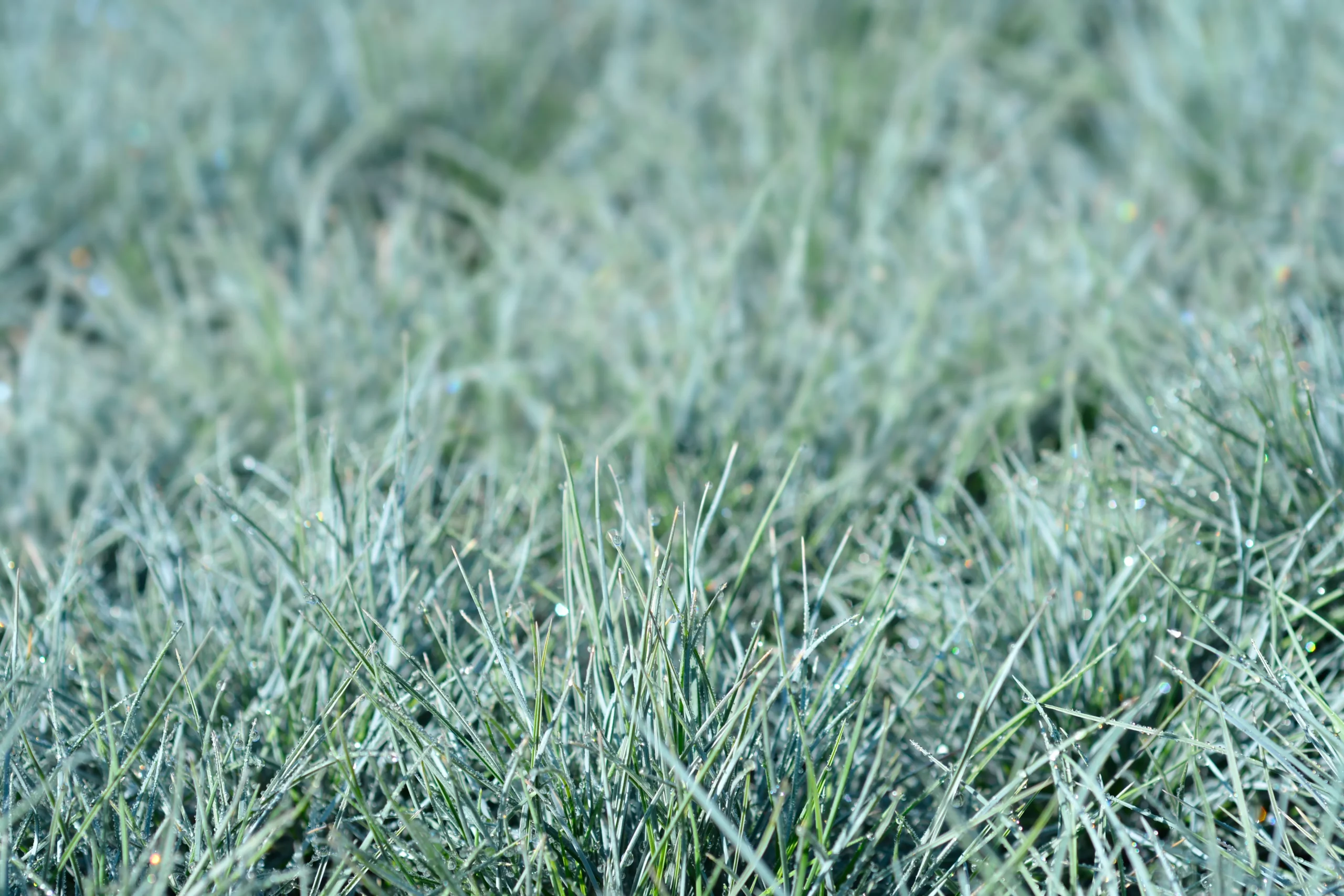Family: Fescue
Type: Ornamental grass
Other Common Name: Festuca ovina var. glauca

Blue Fescue, known scientifically as Festuca glauca, is a perennial grass celebrated for its striking blue foliage. It’s a compact, ornamental grass that adds color and texture to any garden setting.
This grass variety is particularly known for its low maintenance and drought tolerance. It forms neat mounds of fine, blue-tinged leaves, creating a striking visual effect.
Blue Fescue is an excellent choice for year-round interest. Its color remains vibrant through various seasons, making it a reliable choice for consistent garden aesthetics.
Hardiness Zone: 2b-9a
Pet Friendly: Yes
Moisture Preference: Dry to average
Sun Needs: Full sun to partial shade
Drought Tolerance (Xeriscape): Yes
Growth Rate: Medium
Average Height (feet): 1
Average Spread (feet): 1
Average Life Span (years): 8
Form: Mounded
Foliage Color: Blue
Foliage Shape: Grassy
Incorporating Blue Fescue into your landscape provides a splash of cool color. It’s perfect for contrasting with green plants or complementing similarly cool-toned foliage.
Use Blue Fescue as a border plant or in rock gardens. Its compact size and tidy growth habit make it ideal for edges and spaces that need definition.
This grass is also great for container gardening. Its small size and striking color make it a perfect choice for adding interest to patios or balconies.

Blue Fescue fits seamlessly into modern garden designs. Its fine texture and blue coloration work well with the sleek lines and minimalistic approach of contemporary landscapes.
In rock gardens, Blue Fescue adds a soft textural contrast to hard stones. Its blue hue complements the natural colors of rock, creating a harmonious balance.
As a drought-tolerant plant, Blue Fescue is ideal for xeriscaping. It thrives in dry conditions, requiring minimal water and care, perfect for sustainable, low-water garden designs.
Plant in clusters for a dramatic effect. Grouping several Blue Fescues creates a sea of blue, enhancing the visual impact.
Combine with bright flowering plants. The blue foliage contrasts beautifully with vibrant flowers, highlighting both textures and colors.
Use as an accent in a mixed border. Blue Fescue can break up the greenery and add interesting color and form to the border.
Select our pre-made garden layouts to create a landscape that’s uniquely yours. Simple, smart, and customizable!
In spring, Blue Fescue begins to grow back if it has been cut back in the fall. New blue-green blades emerge, refreshing the plant's vibrant color.
During summer, Blue Fescue remains a standout with its blue foliage. In some varieties, subtle flower spikes may appear, adding to its ornamental appeal.
In the fall, the blue color of the foliage may deepen. The grass maintains its shape and color, providing continued interest in the garden.
In winter, Blue Fescue can retain much of its color, especially in milder climates. It adds texture and color to the winter garden, even when other plants are dormant.
Blue Fescue thrives in a location with full sun to partial shade. Full sun exposure enhances the blue color of its foliage, while too much shade can diminish its vibrancy.
This grass prefers full sun but can tolerate partial shade. In full sun, its blue color is more pronounced, while in shade, the color may be less vibrant.
Blue Fescue does well in well-drained, moderately fertile soil. It can tolerate poor soils and is particularly adaptable to dry, rocky, or sandy conditions.
Space Blue Fescue plants about 9 to 12 inches apart. This spacing allows each plant to develop fully and maintain good air circulation, reducing the risk of fungal diseases.
The best time to plant Blue Fescue is in the spring or early fall. Cooler temperatures allow the plant to establish roots without the stress of extreme heat.
Dig a hole slightly larger than the root ball, place the plant in, and fill with soil. Water thoroughly after planting and add a layer of mulch to help retain moisture.
Blue Fescue is drought-tolerant once established. Water regularly after planting until the grass is established, then reduce frequency, providing water only during extended dry periods.
Fertilize lightly in the spring if needed. Over-fertilizing can lead to excessive growth at the expense of the plant’s color and form.
Cut back the foliage in late winter or early spring before new growth begins. This helps to remove any dead or discolored foliage and encourages fresh growth.
In spring, prune to remove old growth, and apply a light layer of compost or fertilizer. Ensure the plant is well-watered, especially if the spring is dry.
During summer, Blue Fescue requires minimal care. Ensure it has enough water during prolonged dry spells, but avoid overwatering.
In fall, prepare the plant for winter. Reduce watering and clear any debris from around the plant to prevent fungal diseases.
In winter, Blue Fescue generally requires no additional care. In colder climates, it can benefit from a light layer of mulch for root protection.
Blue Fescue typically grows to about 8 to 12 inches in height and width, forming neat, compact mounds.
Yes, Blue Fescue is considered evergreen or semi-evergreen, depending on the climate. It retains its color throughout the year in many regions.
Yes, Blue Fescue can be divided in early spring every few years to rejuvenate the plant and encourage more vigorous growth.
Sign up below to get exclusive deals, discounts, and new plant collections—delivered straight to your inbox! Plus, stay inspired with the latest gardening tips, landscaping trends, and DIY garden ideas. Start growing with us today!
A big thank you for subscribing to the PBN Design newsletter.
We're thrilled to have you join our community. Get ready for exciting updates, insightful content, and more delivered straight to your inbox.
Stay tuned!
Go backA big thank you for subscribing to the PBN Design newsletter.
We're thrilled to have you join our community. Get ready for exciting updates, insightful content, and more delivered straight to your inbox.
Stay tuned!
Go back